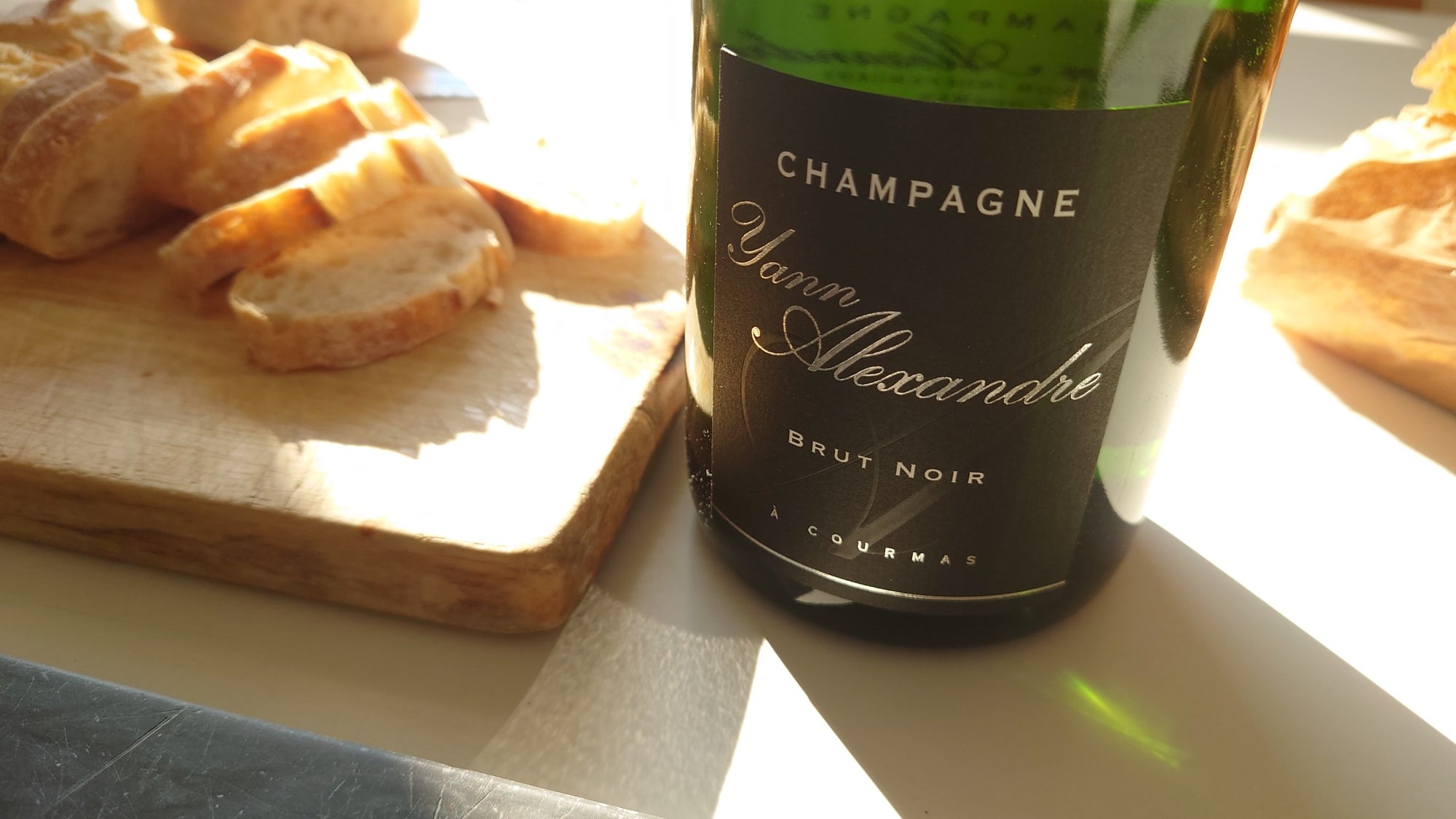
Brettanomyces ‘Brett’ is a yeast with many strains that imparts a wide range of flavors. Fairly common, especially in red wines. Considered by some to add desired character to wines when at low levels.
Telltale aromas: earthy, horsey, barnyard, sweaty-saddle, manure, leather, smoked bacon, cheese, band-aid, antiseptic (from De Long's Wine Tasting Guides)
I came across the term "brett bomb" when I was researching a seriously delicious wine that was also a great value at approx. $10 - the
2004 Château du Cèdre Cahors Héritage. I googled it an found an interesting range of opinions that pretty much sum up the differences in old world and new world tastes in wine.
 Representing the Old World, Jamie Goode liked it:
Representing the Old World, Jamie Goode liked it:
. . . drinking Chateau du Cedre 2004 Cahors, which is inky, dark, tannic and gravelly. Yes, I'm back on wine, and I'm really enjoying it. Lying in bed, with a TV show on a laptop and a glass of wine in hand is like flying business class. Especially when the wine is authentic, too.
Representing the New World, Ray Johnson didn't:
The nose combines the rugged side of wine-love, with horse blanket, cheese and ripe berry fruit. In the mouth the wine is quite tannic and strongly reminiscent of the horse, certainly too much so for many drinkers. This is the negociant wine from the famous estate. Eleve et mis en bouteille a Vire-sur-Lot 13% $10.99 at Bottle Barn. Yes, this wine is just too rustic for most consumers of New World wine. What is disappointing is that it doesn’t have to be such a brett bomb. Cedre has a great reputation but this wine is not in that league.
Funny enough, their notes are very similar except for their tolerance of brettanomyces. Jamie makes a nod to it as gravelly and authentic, while Ray finds it a cheesy horse blanket (
yuck!); indeed, a BRETT BOMB! To be honest, I really didn't notice the brett on my first tasting, noting just earthy leather which could be a lot of things. On a re-tasting - after reading Jamie's and especially Ray's notes - I did notice the brett more and with a little antiseptic band-aid flavor to it as well. Such is the power of suggestion.
If you've ever been curious or not exactly sure of what Brettomyces tastes like, try to track down this wine. The 2004 is getting harder to find, but the 2005 illustrates this point as well, although with more fruit and less aggressive tannins. Since the wine is 90% Malbec, comparing it with a new world brett-free Argentinian Malbec - like
Alamos - is an interesting and enjoyable comparison. Especially with a few steaks on the BBQ.
George Brett One of the greatest hitters in modern baseball history. Batting for the Kansas City Royals in Game 2 of the 1980 World Series, he left in the 6th inning with severe hemorrhoid pain. After minor surgery, he returned to hit a home run, leading the Royals to victory in Game 3. Although the Royals eventually lost the series to the Philadelphia Phillies, Brett became a hemorrhoids hero.

 Representing the Old World, Jamie Goode liked it:
Representing the Old World, Jamie Goode liked it:


Comments
I personally don’t mind a little whiff of bretty aroma (“4-EP” or “4-EG”), as long as it doesn’t overwhelm everything else. It can add complexity and charm.
But here’s the problem: since it’s a wild yeast that’s tolerant of alcohol, it can keep on chugging away in the bottle. A wine that starts with a charming “touch” of brett may end up becoming a “brett bomb” in the bottle, which is why so many winemakers consider it anathema – it’s something beyond their control that can ruin the product even after it leaves the winery.
For the same reason, it’s also quite possible that the two bottles that Jamie and Ray tasted were very different — given different conditions post-bottling, two different bottles may have had very different levels of “brett” aromas.
Good point, Doug – bottle variation is another possibility for the difference. Still, I’ve tried the 2004 du Cedre a few times over the past few years and haven’t found huge differences. It may be bottle variation but I think this one comes down to personal taste.
I remember someone mentioning an experiment with controlled brett infections but I couldn’t find anything online. I did, however, find an excellent article through Able Grape about methods of brett control in the winemaking process:
http://makewine.com/winemaking/materials/brettanomyces/
“Brettanomyces tends to grow in a bell shape curve, usually with cell counts peaking six to ten months after barrelling. It appears that the cells use up a certain substrate and then die off. It is important to monitor Brettanomyces growth at each racking to see if the cell counts have peaked. Many winemakers feel if the populations of brett are decreasing prior to bottling, it is less likely a “brett bloom” will occur in the bottle.”
Still, there’s always a chance of a brett bomb or brett bloom!
This is an excellent discussion of a complex subject Steve. Too often it’s treated as black or white.
Honestly, I have often found myself on the other side of the fence at a judging, arguing on behalf of a wine that showed a bit of horse blanket. A bit can be quite fetching. Yet it’s always a matter of degree, isn’t it? Few of us want to drink a wine that is brimming with brett and you’re right that the point where it goes too far is a matter of personal taste.
Doug’s point also reminds us that with bottle variation, we might not be experiencing the same wine. In addition to the evolution in the bottle that Doug describes, my go-to-guy for wine chemistry, Dr. Barry Gump, taught me another. He said that the bloom may vary by bottle because the distribution of brett and its associated compounds are not uniform in a tank or barrel. Thus when the wine in question is sent to the bottles, some bottles might have more potential to smell foul than others. It’s as if their starting blocks are placed at different points along the track.
Great photo of brett too!
Hi Ray,
Thanks for the comment – I’m sorry that I took you as a kind of brett basher! It is a question of degree when it comes to brett. The few times I rejected a wine because of it was when it had eclipsed all the other flavors, most memorably in an Italian white wine.
Although I usually enjoy it in a wine, I have to say that if I were a wine maker I would make sure to eliminate it as much as possible.
It’s certainly not black and white!
Sorry to join the discussion late, but we can all agree that brett can add another layer of complexity to the wine. But like any fundamental component of wine, it must be in balance with all other aspects of the wine and even then that is a matter of palate preference. Whether or not the presence of “cheesy horse blanket” being a fault in a balanced wine will never be solved; as Ray states it is a matter of personal taste. Those who do not prefer it it will critique in a negative manner while those that do will view its as positive. Certainly Goode’s review influences me to try the wine while Johnson’s does not. Should their be a more objective way of reviewing or evaluating the influence of brett without sensationalist terms like “brett-bomb”? Or even assuming automatically that new-world wine drinkers would dislike this wine? This is certainly a death-knell for the sale of this wine to those consumers who by wines based off the review from a critic, as they will be influenced by the review and not evaluate the wine objectively. Its not so much an issue of brett being good or bad but the popular perception of it being good or bad and how that influences the consumer market.
[…] « Tasting Terms: Brett Bomb […]
One certainly would love to find out how a wine would genuinely taste with and then without the brett bloom. It is like the definition of art: art is what people can get away with, brett becomes art to winemakers and the death of what could have been in wines affected.